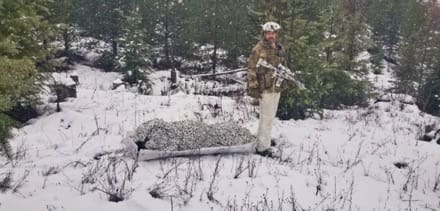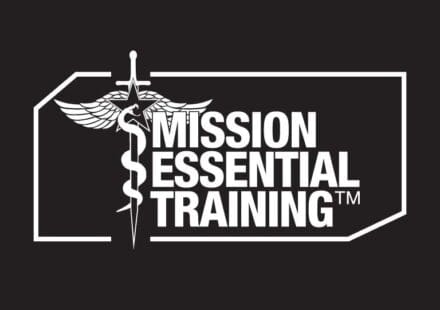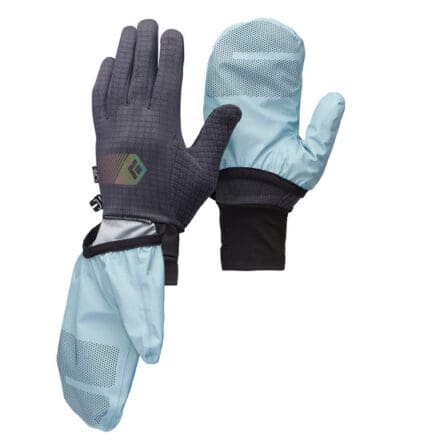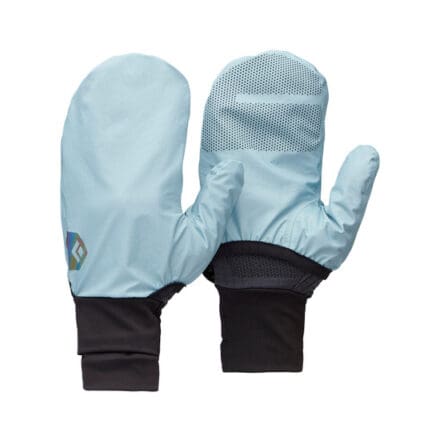This 1942 US Army training film is a great snapshot in time, depicting various clothing and equipment issued at the time to ski troops, specifically members of the 10th Light Division.
This 1942 US Army training film is a great snapshot in time, depicting various clothing and equipment issued at the time to ski troops, specifically members of the 10th Light Division.
During AUSA Sergeant Major of the Army Michael R. Weimer announced several qualification badge updates including the implementation of a Mountaineering badge to holders of Special Qualification Identifier (SQI) “E” which is awarded to graduates of the Basic Military Mountaineering Course (BMMC) a National Guard course held at Army Mountain Warfare School (AMWS) in Vermont.

For decades graduates have worn the Ram’s Head insignia. While not authorized for active duty Soldiers, National Guard troops have probably worn the badge on their uniform.
In fact, it has a long history in the Army. It was derived from the Distinctive Unit Insignia or unit crest for the 85th Infantry Regimental crest which was one of three regiments comprising the 10th Light Division (Alpine) when it was activated in July 1943. In the 1950s, the United States Army Mountain and Cold Weather Training Command at Fort Carson and Camp Hale, Colorado adopted the Ram’s Head Device as the badge worn by their cadre.
Despite this, when SMA Weimer made the announcement he stated that it would be a completely new badge and that the service would not adopt the Ram’s Head Device.
Instagram account @ovisapparel has seen artist concepts of the proposed badge and shared them online.
This is his post verbatim so as not to add or subtract from what was shared.
The Army Mountaineer Badge, an official replacement for the current Rams Head Device, is slated to be finalized this month. In October, the AMWS was asked to submit designs to the Heraldry office for use as inspiration. Initially I was told there would be ‘no animals allowed’, as the SMA appears to have a disdain for ‘goats’.
Above are three designs we created with my original artist and submitted to the Office of Heraldry. Directly after this, I heard there was strong pushback (from people with much more influence than me) on there not being a Ram involved in the conversation (shoutout).
I have been fortunate enough to see the two final designs being debated, one of which is in fact a Rams Head. I’m not comfortable sharing those quite yet, but I can say the other design is a combination of two of our sketches shown above, which is pretty rad (1 & 3). Funny enough, we just drew #3 as an undercover Ram (if it’s flipped upside down). Got ‘em.
~The AMWS was not a source for any of this information and remains unaffiliated with OVIS – this all remains as speculation until we see a Memo~
Here are the drawings:
The Ice Raider TACTSLED: Tactical Adaptive Cold Terrain SLED is Winter Warfare’s snow pulk sled design made in Idaho.

The Ice Raider snow sled is made from nearly indestructible 1/16″ UHMW industrial plastic. Available in two sizes, the large bed dimensions are 60″ L x 20″ W. During testing they pulled nearly 500 lbs on it. The sled rolls up making it ideal for getting it on a bird with you or putting it in the back seat.
The Kaldr name is their in-house brand and is the old Norse name for cold. Available from WinterWarfare.com a Veteran Owned company.
www.winterwarfare.com/shop/Tactical-Snow-Sled-TACTSLED-Ice-Raider
The principle of “the more you know, the less equipment you need” highlights the importance of mastering basic skills and mindset over dependence on gear in high-stress or resource-limited situations or environments. It emphasizes that in critical moments, you can’t always rely on having access to desired equipment. Instead, your training, experience, and character become your greatest asset.

As a training company, CTOMS™ holds to the philosophy that it is necessary to first train to rely on your own abilities rather than becoming dependant on equipment. Once owned, through training and experience, knowledge and skills are always with you. This approach then leads to knowledgeable equipment choices that extend capabilities, rather than creating compensation.
CTOMS™ Mission Essential Training (MET™) provides tactical and emergency medicine education and training experiences to law enforcement, military, and emergency services, and is now booking 2025 training events.
For more information see the MET™ training catalogue, or contact training@ctomsinc.com
TRACE™ is a complete capability micro-rope system designed for military, law enforcement, and adventure seeking end-users. TRACE™ Systems are built around a set of innovative core components designed for use with the TRACE™ 6mm micro rope. These are then used to build out ultra-light and ultra-compact task specific or general-purpose kits. TRACE™ kits currently available from CTOMS™ include Basic Capability, Rescue, Mountain Guide, Glacier Travel, Basic Operator, Special Operations Capable (SOC), and the Assault Lead Climber Rack.

The technology that allows for the small size and weight of the system does have some unique characteristics, and CTOMS™ training is highly recommended prior to use of TRACE™ Systems. These courses allow the safe use of the system while providing instruction on it’s most efficient and effective employment in any capability requirement.
CTOMS™ is now booking 2025 for the following TRACE™ Systems (TS) courses:
TS Basic, TS Rescue and Access, TS Advanced, TS Tactical Climbing, TS Alpine, TS Night Operations, and TS Instructor.
For information on TRACE™ Systems and training visit:
Or contact training@ctomsinc.com

Black Diamond’s GridTech Storm Hood Gloves are made with thermal insulating fleece and feature a stowable, waterproof outer mitt for additional cold weather protection which will get you down below freezing.

In addition to a touchscreen compatible forefinger and thumb, there’s a wristwatch opening and soft nose wipe.

Available in sizes XS – XL in Carbon-Glacier colorway.
www.blackdiamondequipment.com/en_US/product/gridtech-storm-hood-gloves